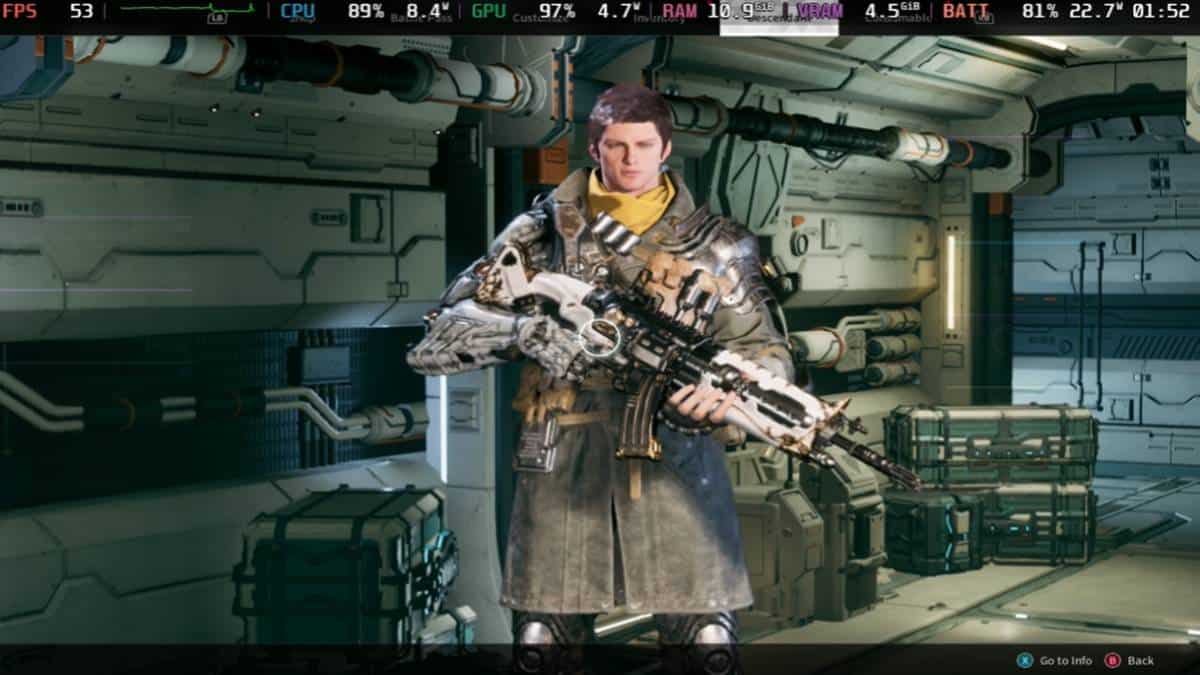Yes, The First Descendant runs on Steam Deck, but it’s choppy without these graphics tweaks

Table of Contents
The First Descendant is here and the brand-new looter shooter has gained a lot of attention at launch. Its free-to-play model has given everyone the chance to try it out, with some mixed success. For example, there are reports that the game is crashing on high-end Intel 13900K & 14900K CPUs, among other stability issues.
So how does it run on the Steam Deck? Surprisingly enough, it is manageable on Valve’s popular handheld gaming PC, though we’re yet to see any word on its official verification status. We’ve already covered the best graphics settings for PC users, so in this guide, we’re going to take you through the best settings for The First Descendant on Steam Deck.
Prime Day is finally here! Find all the biggest tech and PC deals below.
- Sapphire 11348-03-20G Pulse AMD Radeon™ RX 9070 XT Was $779 Now $739
- AMD Ryzen 7 7800X3D 8-Core, 16-Thread Desktop Processor Was $449 Now $341
- ASUS RTX™ 5060 OC Edition Graphics Card Was $379 Now $339
- LG 77-Inch Class OLED evo AI 4K C5 Series Smart TV Was $3,696 Now $2,796
- Intel® Core™ i7-14700K New Gaming Desktop Was $320.99 Now $274
- Lexar 2TB NM1090 w/HeatSink SSD PCIe Gen5x4 NVMe M.2 Was $281.97 Now $214.98
- Apple Watch Series 10 GPS + Cellular 42mm case Smartwatch Was $499.99 Now $379.99
- ASUS ROG Strix G16 (2025) 16" FHD, RTX 5060 gaming laptop Was $1,499.99 Now $1,274.99
- Apple iPad mini (A17 Pro): Apple Intelligence Was $499.99 Now $379.99
*Prices and savings subject to change. Click through to get the current prices.
Best graphics settings for The First Descendant on Steam Deck
Anyone looking to get the most out of The First Descendant on their Steam Deck definitely needs to do some tinkering with the settings. While the game does run, we can get it a little smoother with help from upscaling tech such as FSR or XeSS, both of which are relevant to the Steam Deck. No Nvidia DLSS here given the Deck’s AMD-based hardware. With that in mind, here’s a list of settings we’d recommend.
| Graphics | Custom |
| Ray Tracing | Off |
| Additional Options | Off (30 FPS), FSR Quality Mode (40 FPS) |
| Vsync | Off |
| Maximum Frame Rate | 60 |
| Visibility | Low |
| Anti-aliasing | Medium |
| Post Processing | Low |
| Shadows | Low |
| Global Illumination | Low |
| Reflections | Low |
| Textures | Low |
| Effect | Low |
| Vegetation | Low |
| Shader Quality | Low |
| Object | Low |
| Physics | Low |
| Motion Blur | Off |
The First Descendant Steam Deck gameplay
While the game is playable at around 30 FPS without upscaling, you can achieve a smoother 40 FPS by utilizing FSR. The video above, courtesy of Steam Deck Gaming, demonstrates this, though using FSR will mean some blurriness and pixelation as a compromise. Our recommended low graphics settings plus FSR 3.0 Quality or Performance mode help achieve this 40 FPS milestone more consistently.
It’s worth noting that Frame Generation is available as well. However, it adds a sizeable amount of input lag with “little to no benefit on performance”. We can see from the footage though that there is at least some kind of performance uplift in terms of framerate, but the input lag is far from ideal.



